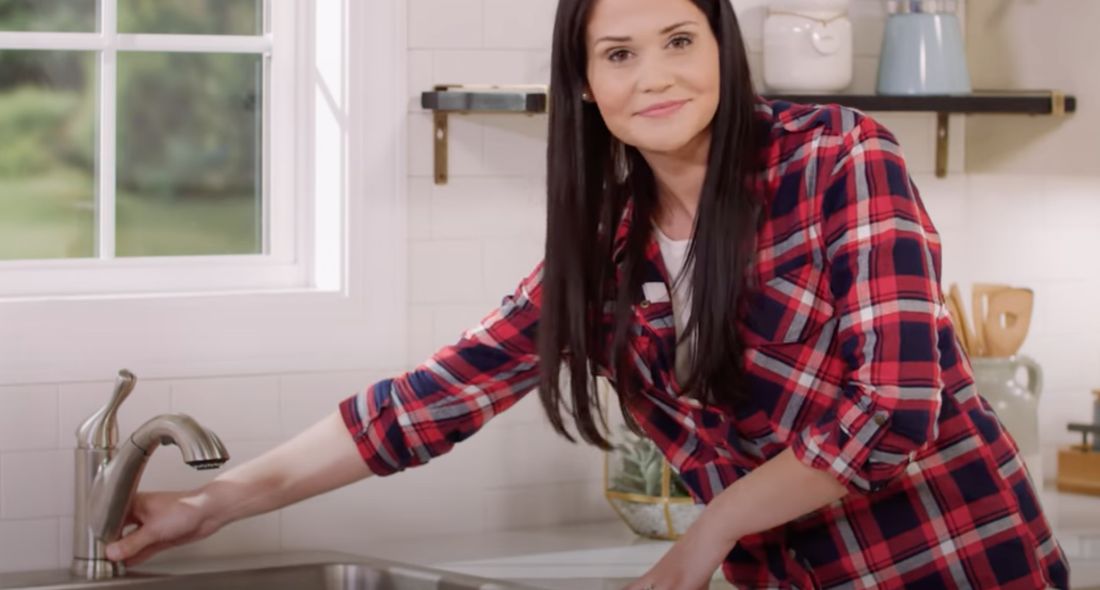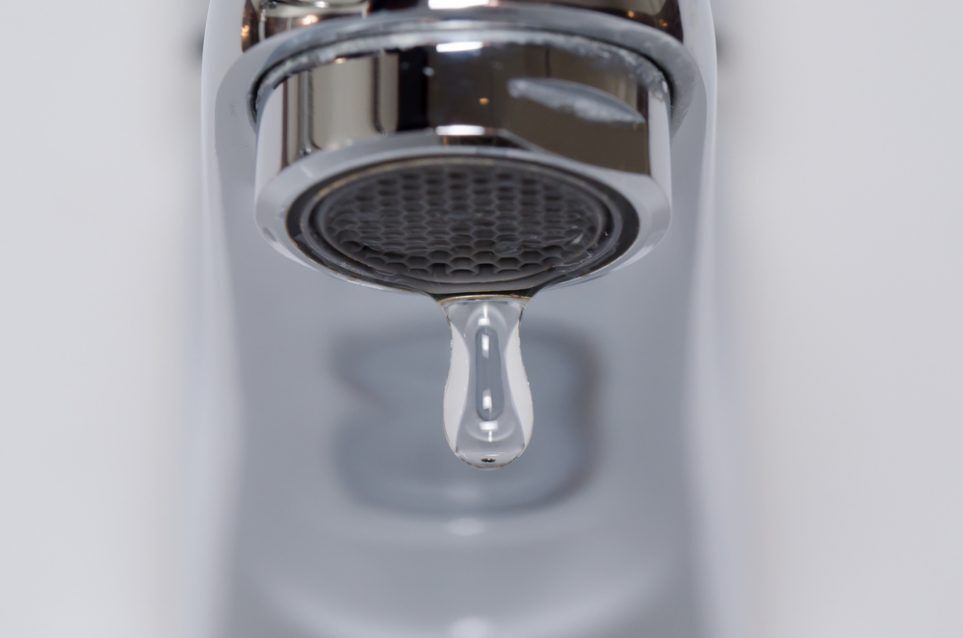Learning the Significance of Dealing with a Broken Faucet
Learning the Significance of Dealing with a Broken Faucet
Blog Article
Everyone has their private conception when it comes to 4 Common Reasons for a Leaky Faucet.

Trickling faucets might seem like a small aggravation, however their impact surpasses simply the inconvenience of the sound. From drainage to incurring unneeded financial prices and health risks, neglecting a dripping faucet can result in various effects. In this short article, we'll delve into why it's essential to resolve this typical family issue quickly and properly.
Wastage of Water
Environmental Effect
Dripping faucets contribute dramatically to water wastage. According to the Environmental Protection Agency (EPA), a single faucet dripping at one drip per second can waste more than 3,000 gallons of water annually. This not only strains water resources yet also influences communities and wildlife dependent on them.
Financial Prices
Boosted Water Expenses
Past the ecological effect, dripping taps can pump up water bills considerably. The collected wastage gradually translates right into higher energy expenses, which might have been avoided with timely repairs.
Prospective Residential Property Damages
Furthermore, long term dripping can cause harm to fixtures and surfaces surrounding the tap. Water accumulation can trigger discoloration, deterioration, and also structural problems if left ignored, causing added fixing costs.
Wellness Problems
Mold and Mildew Development
The constant visibility of wetness from a leaking faucet creates an optimal setting for mold and mold development. These fungi not only endanger interior air high quality yet additionally present health risks, especially for individuals with respiratory problems or allergies.
Waterborne Illness
Stagnant water in leaking taps can end up being a breeding ground for germs and various other pathogens, raising the risk of waterborne illness. Impurities such as Legionella bacteria flourish in stagnant water, possibly leading to major health problems when consumed or breathed in.
Do it yourself vs. Professional Repair work
Benefits and drawbacks of DIY Repair
While some may attempt to fix a dripping faucet themselves, do it yourself fixings feature their very own collection of difficulties. Without appropriate knowledge and tools, do it yourself efforts can worsen the problem or lead to insufficient fixings, extending the problem.
Advantages of Employing a Professional Plumber
Employing an expert plumber ensures that the underlying root cause of the dripping tap is dealt with properly. Plumbing professionals possess the knowledge and devices to detect and fix tap problems efficiently, saving time and minimizing the threat of more damage.
Step-by-Step Overview to Fixing a Dripping Faucet
Tools Needed
Prior to attempting to deal with a trickling tap, collect the essential devices, consisting of a flexible wrench, screwdrivers, substitute components (such as washing machines or cartridges), and plumber's tape.
Typical Faucet Issues and Their Solutions
Determine the type of tap and the details concern triggering the drip. Common troubles consist of worn-out washers, rusty valve seats, or faulty O-rings. Describe maker instructions or on-line tutorials for step-by-step advice on repair work.
Preventive Measures
Normal Maintenance Tips
To avoid dripping faucets, execute routine upkeep such as cleaning aerators, checking for leakages, and replacing worn-out parts promptly. Furthermore, think about mounting water-saving devices or upgrading to much more effective components.
Relevance of Prompt Repairs
Dealing with leaking faucets as soon as they're discovered avoids additional water waste and prospective damage, ultimately conserving both water and cash in the future.
Influence On Residential Property Worth
Assumption of Well-Maintained Home
Keeping a residential property in good condition, consisting of resolving upkeep concerns like trickling taps, improves its perceived value and desirability amongst prospective purchasers or tenants.
Impact on Resale Worth
Features with well-kept plumbing components, including faucets, command higher resale worths in the property market. Dealing with trickling faucets can contribute to a favorable impact during residential or commercial property evaluations and negotiations.
Environmental Obligation
Specific Contribution to Conservation
Taking obligation for dealing with dripping faucets lines up with wider efforts toward water conservation and ecological sustainability. Every individual's activities collectively make a considerable impact on preserving valuable sources.
Lasting Living Practices
By focusing on timely repair services and taking on water-saving practices, individuals contribute to lasting living methods that benefit both existing and future generations.
Final thought
Attending to a leaking tap exceeds simple benefit; it's a vital action toward preserving water, lowering monetary costs, and guarding health and wellness and home. Whether through do it yourself repairs or specialist aid, doing something about it to deal with trickling taps is a small yet impactful means to promote responsible stewardship of sources and contribute to a much healthier, much more sustainable future.
How to Fix a Leaky Faucet: Step-by-Step Repair Guide
A leaky faucet may seem like a simple annoyance, but if it's not fixed promptly, that leak could cost hundreds to potentially thousands. From water damage to mold, mildew, and high water bills, even a tiny leak can be catastrophic if left unattended. Damage like this can even affect the overall value of your home, so it's important to take the right approach for leaky faucet repair. You may need the help of a plumber in some cases, but we've got a few tips you can try on how to fix a leaky faucet before calling the pros.
Four Faucet Types
When you're learning how to fix a leaky faucet, the first step is knowing what kind of faucet you're working with! There are four common types.
Cartridge Faucets
Cartridge faucets come in one- or two-handled varieties. In one-handled cartridge faucets, hot and cold water combines in a single cartridge. In the two-handled versions, hot and cold water are controlled separately and mixed in the faucet.
Ball Faucets
Ball faucets have a single lever you push up and down to adjust the pressure and rotate to change the temperature. A slotted metal ball controls the amount of water allowed into the spout.
Compression Washer Faucets
They're the oldest type of faucet, but they're still used in many homes — especially older ones. Compression faucets have two separate handles that, when turned, raise or lower the washer that seals a water valve. This valve stops water from flowing through the faucet when it is turned off.
Disc Faucets
Disc faucets rarely need to be repaired due to their maintenance-free design. The water flow is controlled by two discs — the upper one raises and lowers against a fixed lower disc, creating a watertight seal. If your disc faucet starts leaking, you may need to replace the seals or clean residue buildup from the inlets.
Fixing a Leaky Faucet
Step 1: Turn Off the Water
Whether you're learning how to fix a leaky bathtub faucet or how to fix a leaky kitchen faucet, always turn off the water supply to your working area when you're fixing a leak. The last thing you want is a flood added to your list of things to fix.
Look for the shutoff valves below your sink or around the tub and turn them clockwise to stop the water flow. If your faucet doesn't have shutoff valves, you may need to turn off the water for the whole house. Check to make sure it's off by turning the faucet on. If nothing comes out, you're ready to start the repair.
Step 2: Take Apart the Faucet
How you disassemble your faucet depends on the type of fixture you have. You can use a flathead screwdriver to remove the caps on top of the handle or handles for cartridge and compression faucets. Inside, you should see handle screws. Unscrew these with a screwdriver to remove the handle.
Disc- and ball-style faucets will typically have an inlet screw near the handle, and removing that will reveal the interior of the faucet.
Detach the Valve Stem
For cartridge- and compression-style faucets, you'll see the inner valve stem or cartridge once you remove the faucet handles. If you have a compression faucet, unscrew the brass valve stem. If you have a cartridge faucet, pull out the cartridge. If your cartridge has been in place for a while, it may require some tools or extra force to remove it due to mineral deposits.
Examine and Replace Parts
Once you've removed the parts, check them out to confirm what needs to be replaced. You may see corroded rubber washers, O-rings, stems, or cartridges. On a ball-style faucet, check the seats and springs for damage.
If you need to repair a leaky disc faucet, check the inlet and seals on the lower disc.
Once you determine what parts must be replaced, visit your local hardware store. Bring the damaged parts with you to ensure you can purchase the correct components to replace them.
Clean Valves and Faucet Cavity
If you've removed a stem or cartridge, you may notice mineral buildup in the faucet's threads. Use white vinegar to clean the valve seat by soaking it for a few minutes, then scrub it away with a soft toothbrush and rinse with warm water. You can also clean the interior of the faucet in the same way.
Reassemble the Faucet
Once your faucet is cleaned and the required parts have been replaced, it's time to reassemble it. Put the pieces back together and slowly turn the water supply back on. Doing this slowly is crucial because too much initial water pressure can damage the new hardware you've just installed.
https://homewarranty.firstam.com/blog/how-to-fix-leaky-faucet

I am very serious about What Causes Leaky Faucets & How To Fix Them and I really hope you appreciated our blog entry. Sharing is nice. One never knows, you could be doing someone a favor. I am grateful for being here. Come back soon.
Report this page